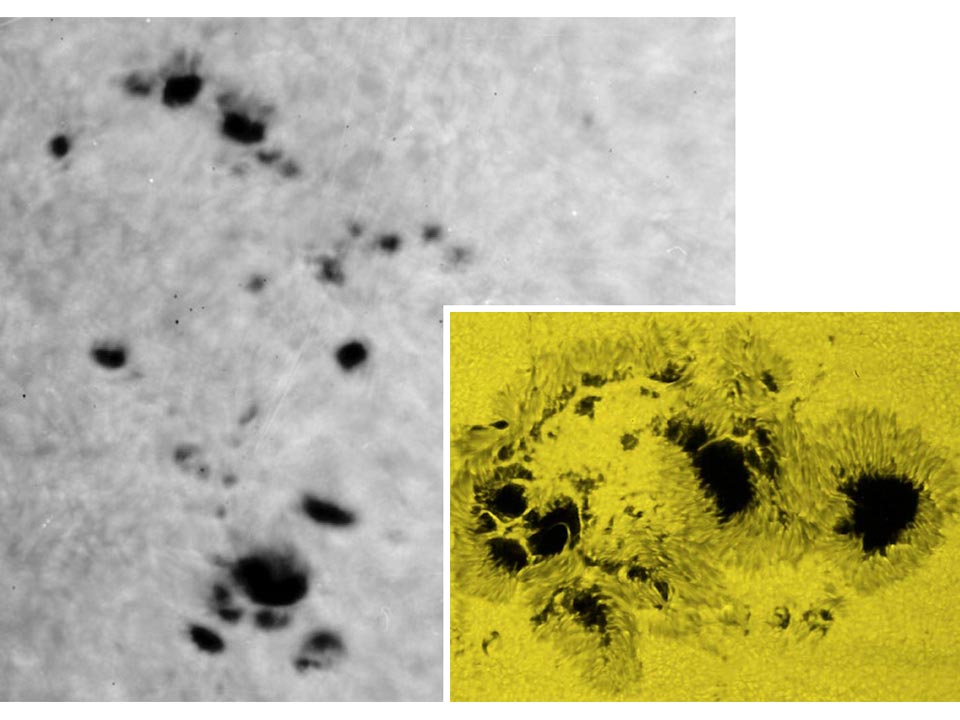
Sunspots appear when upwellings of the sun's magnetic field trap ionized plasma - or electrically charged, superheated gas - on the surface. Normally, the gas would release its heat and sink back below the surface, but the magnetic field inhibits this process. From Earth, the relatively cool surface gas looks like a dark blemish on the sun.
Astronomers have been observing and counting sunspots since Galileo began the practice in the early 17th century. From those studies, scientists have long known that the sun goes through an 11-year cycle, in which the number of sunspots spikes during a period called the solar maximum and drops - sometimes to zero - during a time of inactivity called the solar minimum.
The last solar minimum should have ended last year, but something peculiar has been happening. Although solar minimums normally last about 16 months, the current one has stretched over 26 months - the longest in a century. One reason, according to a paper submitted to the International Astronomical Union Symposium No. 273, an online colloquium, is that the magnetic field strength of sunspots appears to be waning.
Since 1990, solar astronomers Matthew Penn and William Livingston of the National Solar Observatory in Tucson, Arizona, have been studying the magnetic strength of sunspots using a measurement called Zeeman splitting. Named after the Dutch physicist who discovered it, the splitting is the distance that appears between a pair of lines in a spectrograph of the light given off by iron atoms in the sun's atmosphere. The wider the splitting, the greater the intensity of the magnetic field that created it. After examining the Zeeman splitting of 1500 sunspots, Penn and Livingston conclude that the average magnetic field strength of sunspots has declined from about 2700 gauss - the average strength of Earth's field is less than 1 gauss - to about 2000 gauss. The reasons for the decrease are not clearly understood, but if the trend continues, sunspot field strength will drop to 1500 gauss by as early as 2016. Because 1500 gauss is the minimum required to produce sunspots, Livingston says, at that level they would no longer be possible.
The phenomenon has happened before. Sunspots disappeared almost entirely between 1645 and 1715 during a period called the Maunder Minimum, which coincided with decades of lower-than-normal temperatures in Europe nicknamed the Little Ice Age. But Livingston cautions that the zero-sunspot prediction could be premature. "It may not happen," he says. "Only the passage of time will tell whether the solar cycle will pick up." Still, he adds, there's no doubt that sunspots "are not very healthy right now." Instead of the robust spots surrounded by halolike zones called penumbrae, as seen during the last solar maximum (photo), most of the current crop looks "rather peaked," with few or no penumbrae.
"It is a very interesting sequence of observations," says solar physicist Scott McIntosh of the National Center for Atmospheric Research in Boulder, Colorado. The researchers "have carefully analyzed their data and the trend appears to be real," he says.
Solar physicist David Hathaway of NASA's Marshall Space Flight Center in Huntsville, Alabama, agrees but with a caveat. "It's an important paper," he says. But the sunspot magnetic field calculations don't take into account a lot of small sunspots that appeared during the last solar maximum. Those sunspots have weaker magnetic fields, which, if not included, could make the average sunspot magnetic field strength seem higher than it really was.



all that sneaky CO2 leaking from earth!